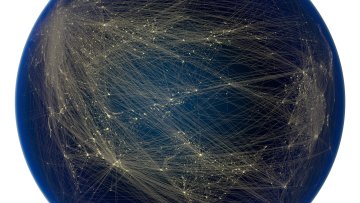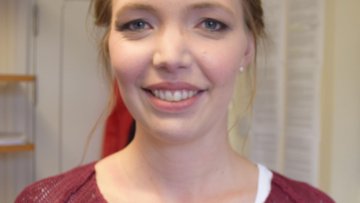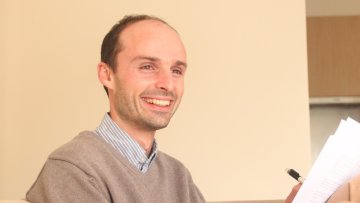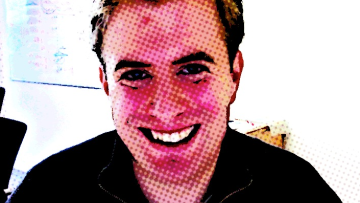IceCube Cascade Events
IceCube Cascade Events
Frontiers in Quantitative Finance Seminar: Pierre Henry-Labordere (SocGen)
Frontiers in Quantitative Finance seminar: Pierre Henry-Labordere (SocGen)
Venue
Citi Stirling Square
5-7 Carlton Gardens
London SW1Y 5AD
Sensitivity Analysis of the Utility Maximization Problem with Respect to Model Perturbations
Abstract
First, we will give a brief overview of the asymptotic analysis results in the context of optimal investment. Then, we will focus on the sensitivity of the expected utility maximization problem in a continuous semimartingale market with respect to small changes in the market price of risk. Assuming that the preferences of a rational economic agent are modeled by a general utility function, we obtain a second-order expansion of the value function, a first-order approximation of the terminal wealth, and construct trading strategies that match the indirect utility function up to the second order. If a risk-tolerance wealth process exists, using it as numeraire and under an appropriate change of measure, we reduce the approximation problem to a Kunita–Watanabe decomposition. Then we discuss possible extensions and special situations, in particular, the power utility case and models that admit closed-form solutions. The central part of this talk is based on the joint work with Mihai Sirbu.
The 1918 Spanish influenza pandemic claimed around fifty million lives worldwide. Interventions were introduced to reduce the spread of the virus, but these were not based on quantitative assessments of the likely effects of different control strategies. One hundred years later, mathematical modelling is routinely used for forecasting and to help plan interventions during outbreaks in populations of humans, animals and plants.
12:00
Mass, Kaehler Manifolds, and Symplectic Geometry
Abstract
In the speaker's previous joint work with Hans-Joachim Hein, a mass formula for asymptotically locally Euclidean (ALE) Kaehler manifolds was proved, assuming only relatively weak fall-off conditions on the metric. However, the case of real dimension four presented technical difficulties that led us to require fall-off conditions in this special dimension that are stronger than the Chrusciel fall-off conditions that sufficed in higher dimensions. This talk will explain how a new proof of the 4-dimensional case, using ideas from symplectic geometry, shows that Chrusciel fall-off suffices to imply all our main results in any dimension. In particular, I will explain why our Penrose-type inequality for the mass of an asymptotically Euclidean Kaehler manifold always still holds, given only this very weak metric fall-off hypothesis.
14:15
D modules and rationality questions
Abstract
In this talk we will discuss a new approach to non rationality of projective varieties based on HMS. Examples will be discussed.
14:15
Quantization through Morita equivalence
Abstract
In this talk I will discuss a new proposal for constructing quantizations of holomorphic Poisson structures, and generalized complex manifolds more generally, which is based on using the A model of an associated symplectic manifold known as a Morita equivalence. This construction will be illustrated through the example of toric Poisson structures.
15:30
Degenerate Morse theory and quivers
Abstract
This talk is an update on joint work with Geoff Penington on extending Morse theory to smooth functions on compact manifolds with very mild nondegeneracy assumptions. The only requirement is that the critical locus should have just finitely many connected components. To such a function we associate a quiver with vertices labelled by the connected components of the critical locus. The analogue of the Morse–Witten complex in this situation is a spectral sequence of multicomplexes supported on this quiver which abuts to the homology of the manifold.
Oxford Mathematics is part of the Mathematical, Physical and Life Sciences Division (MPLS) here in Oxford and every year the division gives teaching and equality and diversity awards in recognition of the fact that teaching and the learning environment are at the very core of what we are about and from where all future success will derive.
Oxford Mathematics London Public Lecture: Timothy Gowers - Productive generalization: one reason we will never run out of interesting mathematical questions SOLD OUT
Productive generalization: one reason we will never run out of interesting mathematical questions.
Tim Gowers is one of the world's leading mathematicians. He is a Royal Society Research Professor at the Department of Pure Mathematics and Mathematical Statistics at the University of Cambridge, where he also holds the Rouse Ball chair, and is a Fellow of Trinity College, Cambridge. In 1998, he received the Fields Medal for research connecting the fields of functional analysis and combinatorics.
After his lecture Tim will be in conversation with Hannah Fry. Hannah is a lecturer in the Mathematics of Cities at the Centre for Advanced Spatial Analysis at UCL. She is also a well-respected broadcaster and the author of several books including the recently published 'Hello World: How to be Human in the Age of the Machine.'
This lecture is in partnership with the Science Museum in London where it will take place.
Science Museum, Exhibition Road, London, SW7 2DD
Please email @email to register.
Watch live:
https://facebook.com/OxfordMathematics
https://livestream.com/oxuni/gowers
The Oxford Mathematics Public Lectures are generously supported by XTX Markets.







